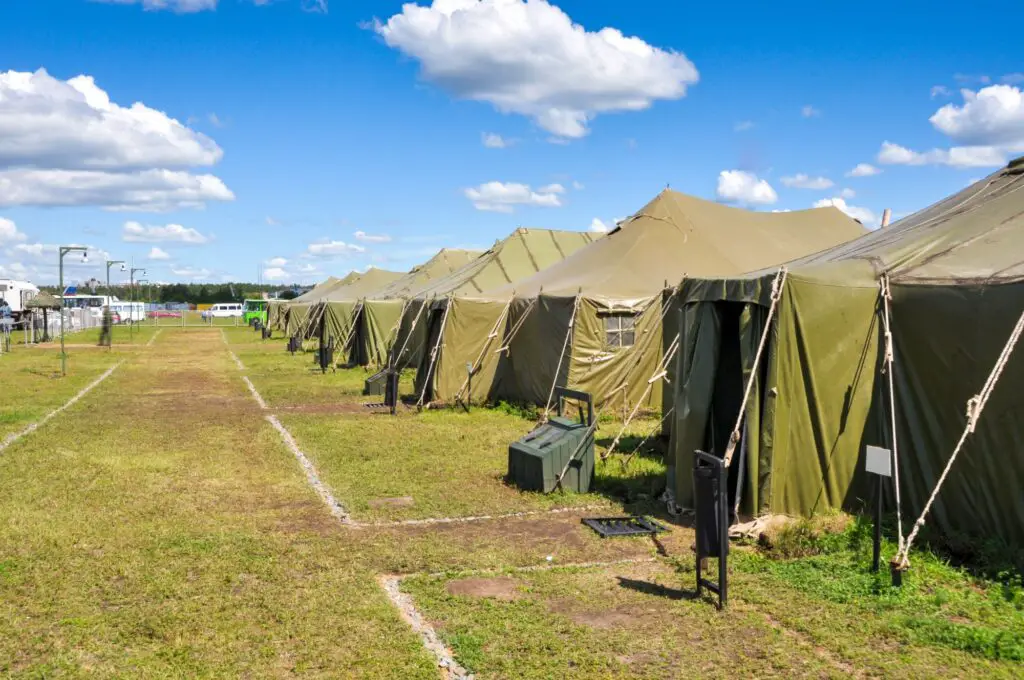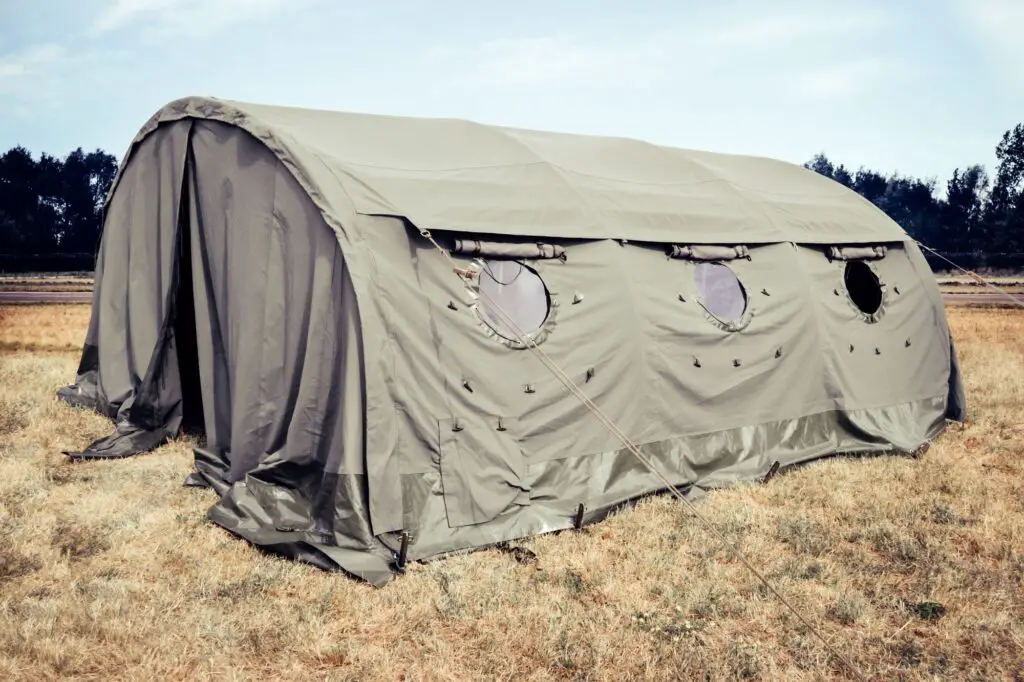With its purpose for safety, security, and resilience amidst the world’s harshest conditions, military shelters encapsulate the very essence of inventive engineering and strategic design. As a synthesis of technological advancements and practical necessities, military shelters bear design constraints uncommon in civilian construction, transforming them into extraordinary feats of engineering.
This article will explore the intricacies behind the military shelter system, revealing a fascinating journey through strategic planning, material science, and adaptive design.

Types Of Military Shelter Systems
The variety of military shelters is expansive, each designed to serve specific functions or cater to specific circumstances. A military mobile hospital, personnel shelter, equipment shelter, command center, and storage unit are just some examples of shelter systems offering troops secure places to rest, work, and receive medical care while deployed.
Here are some of the most common type of military shelter systems:
- Rapidly Deployable Shelters
These are lightweight, compact, and designed for easy transport and quick assembly. They are ideal for operations that require fast mobility, such as search and rescue missions or emergency medical support.
- Semi-Permanent Shelters
These are more durable, offering better protection against environmental conditions. They take longer time to set up but can house personnel and equipment for extended periods.
- Hardened Shelters
These are built to withstand high-impact forces, such as blasts and shrapnel. They are generally used for strategic purposes, like housing critical equipment or serving as command posts in conflict zones.
Key Design Considerations
- Mobility
Mobility is crucial to military operations, and shelters must be designed to match this need. The weight and size of the shelter system play vital roles in its mobility. Lightweight materials like aluminum, composite materials, and specific fabrics, as discussed earlier, are commonly used to reduce weight.
Design-wise, engineers often focus on structures that can be flat-packed or modular, allowing for compact transportation. In essence, the mobility factor directly influences the design and materials choice for military shelters, aiming to provide robust defense capabilities on the move.
- Speed Of Deployment
In many scenarios, particularly in conflict zones or emergency situations, quick assembly of a shelter system is important. A well-designed shelter should allow for quick deployment with minimal tools and manpower. This includes intuitive design features that reduce the time and complexity of assembly. For instance, using interlocking components, pre-attached elements, or pop-up designs can significantly cut down deployment time.
- Durability
Military shelters must be designed to withstand a variety of harsh environments. These can include extreme temperatures, high winds, heavy snow or rain, and even corrosive environments. To ensure durability, the materials chosen must be robust, weather-resistant, and long-lasting. For example, fabrics used should be tear-resistant and treated to withstand UV radiation, while structural materials should be able to endure physical stress and environmental wear and tear.
- Defense
The primary function of a military shelter is to protect its occupants from potential threats. These threats can be environmental, such as earthquakes, floods, or extreme weather, or man-made, such as blasts, chemical attacks, or shrapnel from explosives. To serve this purpose, shelters may need to be fortified or reinforced, and their designs should incorporate features that provide maximum protection. In the case of hardened shelters, materials like concrete, steel, or specialized composites are employed for their high-impact resistance.
- Sustainability
While the immediate tactical needs of a military shelter are important, sustainability for long-term use cannot be overlooked. Military missions can often extend over several months, and the shelters used should provide comfortable living conditions throughout their duration. This requires the inclusion of insulation for temperature control, electrical systems for lighting and equipment, and facilities for sanitation.
Plus, the shelter design should also consider renewable energy sources, efficient power management systems, and smart resource usage to ensure long-term habitability.
The key design considerations in military shelter systems require a blend of diverse engineering principles and creative problem-solving. Each factor carries significant weight in how the shelter performs in its intended environment.
Materials And Construction
The choice of materials directly impacts the shelter’s weight, durability, and protective qualities. Lightweight materials like aluminum, reinforced polymers, and composite materials are often used due to their strength-to-weight ratio. These materials are also resistant to corrosion, which is crucial in humid or saline environments.
Fabric materials, such as rip-stop nylon or vinyl-coated polyester, are commonly used for their flexibility, lightness, and resistance to UV radiation. They are typically used in rapidly deployable shelters, providing weather resistance and insulation.
For hardened shelters, engineers employ materials such as concrete, steel, or specialized composites that can absorb high-impact forces. These materials offer maximum protection but sacrifice mobility due to their weight.
Technological Developments
Technology has greatly impacted the evolution of military shelter systems. Innovations in materials science, like self-healing materials and energy-absorbing composites, are finding their way into military engineering.
Advancements in architecture and design software have facilitated the creation of modular designs, allowing for easier assembly and more efficient use of space. Furthermore, the integration of renewable energy sources, like solar panels and wind turbines, is making military shelters more sustainable and less dependent on external power sources.
In the realm of smart technologies, shelters equipped with sensors can monitor environmental conditions and potential threats, increasing the safety of personnel. The Internet of Things (IoT) technology allows these smart shelters to be part of a network, providing real-time data on various parameters to the command center.

Final Thoughts
The engineering behind military shelter systems is a complex blend of multi-disciplinary principles. These structures need to be lightweight yet sturdy, easily transportable yet resilient, and quick to set up yet capable of providing long-term support. Through advancements in materials science, technology, and design methodologies, military shelters continue to evolve, becoming smarter, more sustainable, and more efficient at fulfilling their essential role in the field.